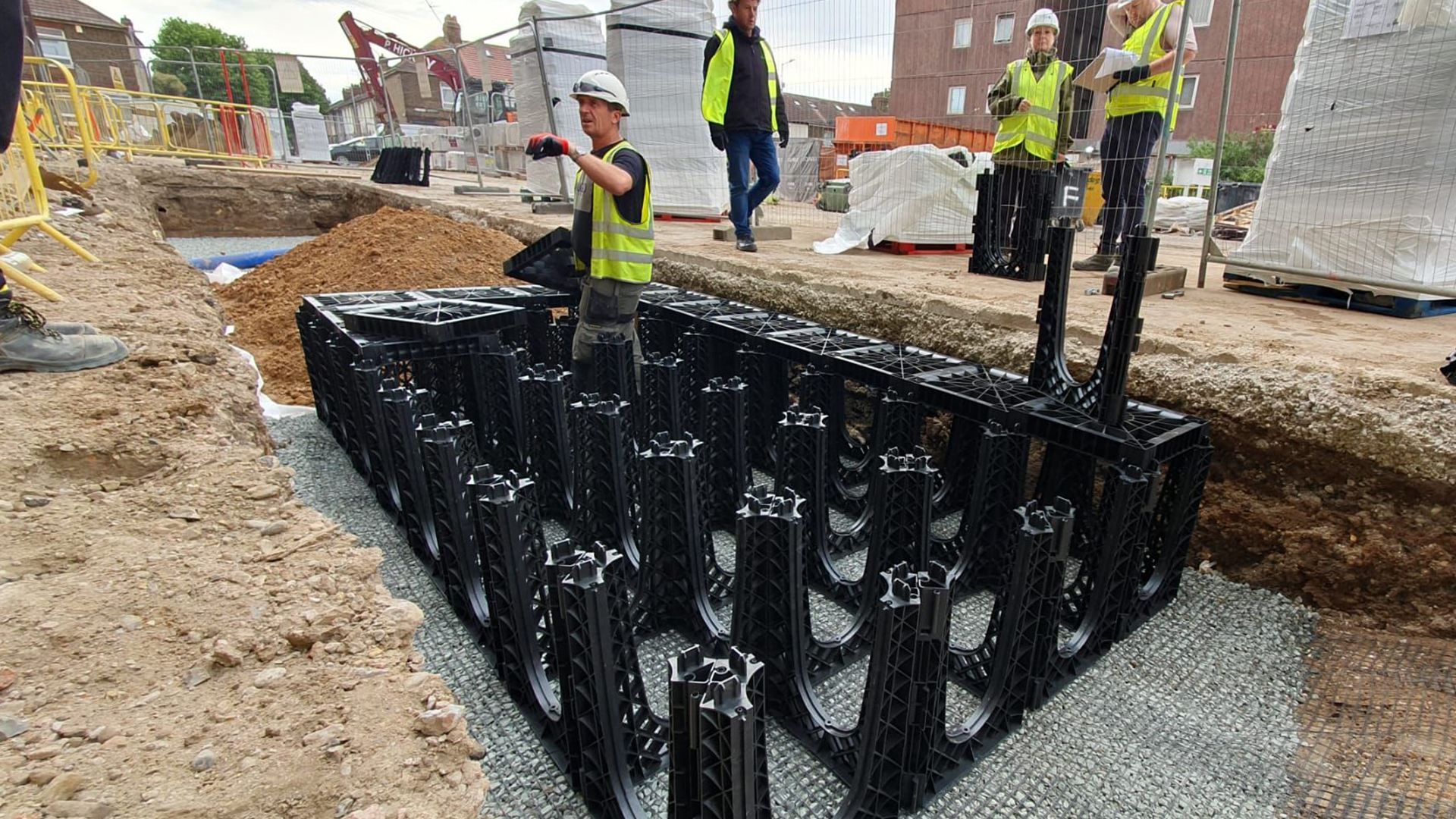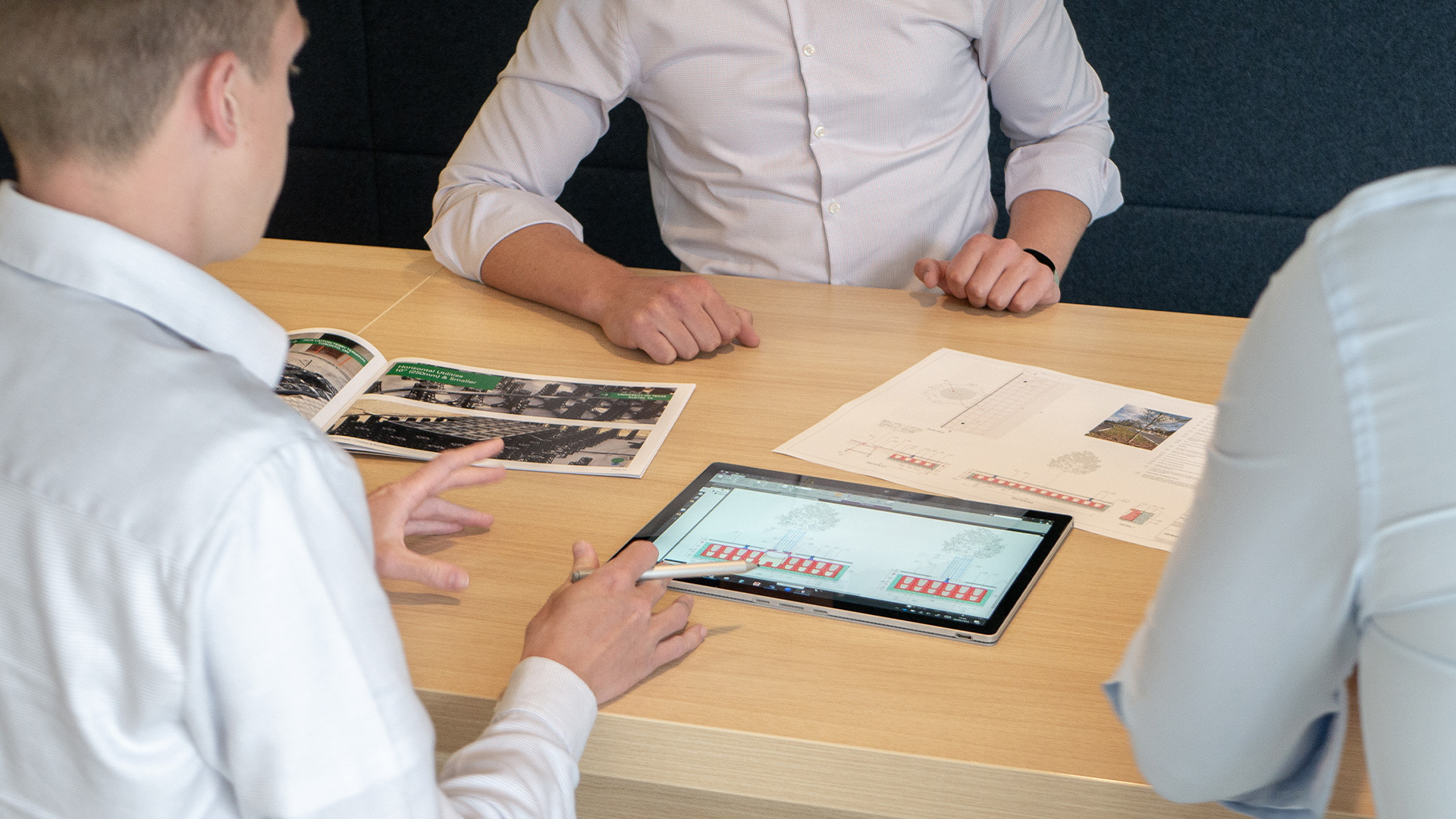As quantity surveyors play a crucial role in cost management and project success, their knowledge extends beyond traditional construction elements. When it comes to assessing tree pits, understanding certain key aspects becomes essential to achieve cost savings while ensuring the long-term success and health of the trees. This blog explores three vital considerations that quantity surveyors and estimators should keep in mind when evaluating tree pits for cost savings.
The Below-Ground Components and Tree Longevity
It is crucial to recognise that the below-ground components of a tree pit are intimately linked to the long-term success and health of trees. Altering soil volume below ground can have a significant impact on the longevity of the trees. Reducing soil volume compromises the ability of trees to establish strong root systems, leading to a decline in their health and survival rates over time. Furthermore, switching from uncompacted soil to compacted media can limit the availability of moisture and nutrients, further jeopardising tree growth. At GreenBlue Urban we understand that replicating the forest floor conditions as closely as possible in an area that’s typically hostile and inimical to tree growth is of fundamental importance.
We also understand tree roots are opportunistic in how they grow, and it, therefore, becomes difficult to predict exactly how the rooting system will establish, which causes concern for those who are responsible for surfaces and utilities. Guidance can sometimes misinform tree planting anywhere near utility runs, which can be misleading. At GreenBlue Urban we assist designers and installers daily on how to overcome these apparent barriers using a suite of well-designed products.

It’s All About the Soil
Related to the previous point, while it may be tempting to reduce or eliminate soil cells such as RootSpace to save costs, doing so compromises the ability of trees to grow and thrive.
This is one of the reasons why statistically, 50% of street trees die before they get to ten years old. They exhaust the resources that the limited tree pit soil originally provided and simply die off, unable to access quality aerated soil media. Soil cells provide vital space for root expansion, allowing trees to establish strong root systems. By maintaining adequate soil volume, quantity surveyors can ensure that trees have the necessary conditions for trees to flourish, promoting their long-term health and reducing the risk of costly replacements.
GreenBlue Urban has always advocated the value of the right soil specification for our ArborSystem and ArborFlow tree pits. Indeed, our whole protocol is to ensure that the soil under paved surfaces around trees is not compromised through excessive compaction.
“If you look after the soil structure, the soil will look after the tree!”
Value Engineering: Cost Deferral and Client Satisfaction
Value engineering is an integral part of any construction project, aiming to achieve cost savings without compromising the quality or performance of the end result. When it comes to tree planting, overlooking the importance of investing in healthy trees can have significant consequences. Failing trees not only impacts the aesthetics of a project but also leaves a negative impression on clients. While cost savings may seem marginal during the planting phase, the long-term expenses associated with tree replacements and poor project aesthetics can dwarf those initial savings.
The foundation of any successful urban landscape project comes down to an understanding of the benefits that urban trees offer and the importance of having mature trees in our cities. GreenBlue Urban is passionate about Quality, not Quantity as we often say –
“Right Tree, Right Place, Right Reason, Right way”
To ensure the best cost-to-tree health decisions, it is advisable for quantity surveyors to liaise directly with GreenBlue, a leading advisory in sustainable long-term landscaping and tree health.
Collaborating with GreenBlue allows for expert guidance on cost-saving measures while prioritising the health and longevity of trees. By making informed choices in partnership with GreenBlue, quantity surveyors can deliver successful projects that satisfy clients’ expectations and align with environmental policies.

Moreover, considering the corporate social responsibility (CSR) aspect becomes crucial. Quantity surveyors must evaluate how low investment in tree health aligns with their aspirations to be best in class on environmental policy in the long run. Demonstrating a commitment to sustainable practices and investing in tree health showcases a dedication to environmental stewardship and enhances a company’s reputation as a leader in the industry.
In the world of quantity surveying, assessing tree pits for cost-saving opportunities requires a nuanced understanding of the below-ground constraints, the significance of proper soil conditions, and the long-term implications of value engineering. By recognising the importance of these three essential aspects, quantity surveyors can make informed decisions that promote tree health, minimise replacement costs, and achieve project success. Collaborating with experts like GreenBlue Urban, prioritising long-term sustainability, and investing in healthy trees are crucial steps toward delivering award-winning projects that leave a positive impact for years to come.

Remember, it’s not a ‘no’ to adding services; RootSpace is like building with Lego, where each piece contributes to the overall success of the project. With the Made in Britain stamp, trust in high-quality products, timely deliveries, and a commitment to excellence will be ensured.
So, be proud to return to the site in many years more and witness the thriving trees, supporting our mission to provide healthy urban environments.


